#Margaret shelburne
Note
So what friendships between the ghost would be? Since all the ghost are quite different (from time periods to just personal interest) I’m just kind curious since I’ve seen lots of different takes
The only time the ghosts are technically friends is when they’re all mad at the same person. But when they’ve been imprisoned together in a glass house for that long, they must have found ways to get along. That’s as close to friends/family as we need, right…?
All right, I’m just gonna say they’re friends. 😉
Horace and George are friends. They who kill Dennis together, stay together. 🖤 (I’m so sorry—)
Royce and Susan hang out sometimes, even though they find each other kind of annoying. They’re close in age, but their eras are pretty different. That’s the main challenge.
Also, Susan likes affectionately teasing Billy.
Dana hates everyone. Sorry. She might have put up with Jean talking to her, though. (Especially since Jean is no competition to her for looks, I guess.)
Margaret and Harold have each other—they don’t need anyone else. (And frankly…the other ghosts are a little scared to get vomit on them.)
While everyone else is out there committing violent acts, Billy and Jimmy tend to get left together. They might awkwardly play a game. They might talk, or they might not. When Jean was there, she could keep a conversation going between all three of them.
Billy really looks up to Royce though, not gonna lie…
Jean was wary of most of the ghosts, but she’d try to get along with the less intimidating ones. She felt a certain pang in her heart for Billy, who reminded her of Bobby. Billy could sense her pity, so didn’t like talking to her very much.
Isabella prefers to keep to herself, as everyone is significantly younger than her and she can’t relate.
Ryan could go from severely antisocial to bothering just about anyone. He fights most often with Horace, but rumour has it he enjoys it.
#thirteen ghosts#thir13en ghosts#the black zodiac#13 ghosts#dark castle entertainment#asks#the first born son#billy michaels#the torso#jimmy gambino#dana newman#the angry princess#the hammer#george markley#ryan kuhn#the jackal#the juggernaut#horace mahoney#susan legrow#the bound woman#the pilgrimess#isabella smith#jean kriticos#the withered lover#royce clayton#the torn prince#Margaret shelburne#the dire mother#Harold shelburne#the great child
2 notes
·
View notes
Text
PORTLAND ROADS TO ESCAPE RIVER

View On WordPress
#Barrier Reef#Cairncross#Cape York#Escape River#Home Islands#Kemp Rocks#Margaret Bay#Middle Reef#Morris Island#Pearl Farm#Pearl Floats#Portland Roads#Round Point#Schelburne Bay#Shelburne Bay#Sunday Island#Viking Reef
0 notes
Text
Anonymous asked: I have always wondered why Winston Churchill never received a proper noble title by the time he died. Ex-Prime Ministers such as Harold Macmillan was made an earl and Margaret Thatcher was made a baroness so why wasn’t Churchill recognised for his heroic leadership and political service during the Second World War?
As you might imagine the answer isn’t as straight forward as you might suppose. In truth Sir Winston Churchill was recognised for shepherding the country and the British Empire through the darkest hours of war. His place in history is assured and for someone who always had an eye on the arc of history Churchill, I imagine, died happily enough knowing his achievements were enshrined in the nation’s long history.
Churchill was offered the title of the Duke of Dover as well as Knight of the Garter by George VI, a monarch who at the outset preferred Chamberlain to Churchill but in time came to deeply appreciate Churchill’s qualities as a war leader. Churchill, much to the King’s surprise, declined the offer of a dukedom and also membership of the Order of the Garter, saying that it would be inappropriate given that the electorate had just given him the Order of the Boot - he had just lost the 1945 General Election to Labour’s Clement Attlee.
Later in 1955, after retiring as prime minister, Churchill was again offered elevation to the peerage in the rank of duke by Queen Elizabeth II as the Duke of London (apparently). He again declined. But Churchill did accept in 1953 from Queen Elizabeth II the Order of the Garter. The Queen appointed him the 912th Knight of the Garter on April 24, 1953. He had already been made a Companion of Honour and a member of the Order of Merit. The Order of the Garter is the most senior and the oldest British Order of Chivalry and was founded by Edward III in 1348. The Order, consisting of the King and twenty-five knights, honours those who have held public office, who have contributed in a particular way to national life or who have served the Sovereign personally.
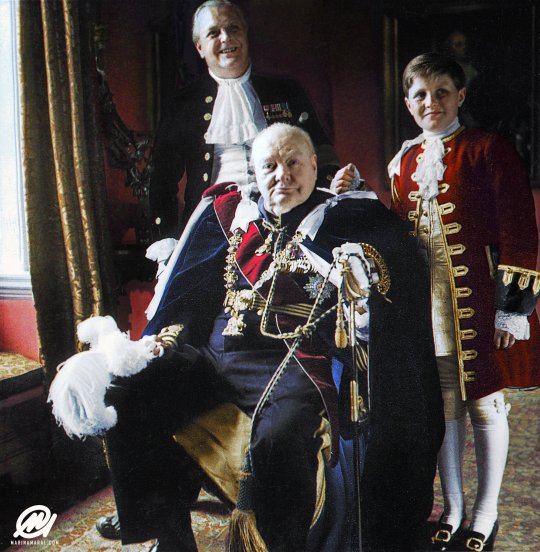
So why did he turn down being a duke because after all past prime ministers retiring from the House of Commons were offered earldoms and other titled baubles?
A few reasons have been put forward by historians and his biographers. It isn’t because Churchill didn’t think it was a special honour, because he recognised its importance. His reasons seemed more practical.
For one thing being offered a dukedom meant also the expectation that you lived the lifestyle of a duke. It goes without saying the lifestyle of a duke, back then, was an expensive undertaking. In the 1940s and 1950s a duke was expected to be rich, to have at least two stately homes plus a large house in London, and to live on his estates and play a part in local affairs. Being a JP, raising funds for local charities, showing up for school openings and the like. It’s all very Downton Abbey-esque. Certainly the social expectations pre-1945 of the British aristocracy well established.
My grandfather was told by his grandfather of how his childhood friend from school, Lord Lansdowne, a great-grandson of Prime Minister Lord Shelburne and a marquess with two stately homes, was offered a dukedom after being viceroy of India; but Henry Petty-Fitzmaurice, the 5th Marquess of Landsdowne, refused because his income was not large enough. In fact being a duke was no fun at all, despite what people then and especially now think.
At the outset of the 1870s, the British aristocracy could rightly consider themselves the most fortunate people on earth: they held the lion's share of land, wealth, and power in the world's greatest empire. By the end of the 1930s they had lost not only a generation of sons in the First World War, but also much of their prosperity, prestige, and political significance. This loss was accentuated in slow motion speed into the 1950s and beyond. Other countries such as Russia, Germany or Austria can pinpoint a single event to the demise of their landed nobility (revolution or war), but in Britain it has been quintessentially different. Britain was unique in that the displacement of the British aristocracy occurred without revolutionary overthrow. It was in fact a bloodless revolution.

The assembled Dukes in 2010: (from left to right) 1. James Graham, 8th Duke of Montrose; 2. David Manners, 11th Duke of Rutland; 3. John Seymour, 19th Duke of Somerset; 4. Ralph Percy, 12th Duke of Northumberland; 5. Andrew Russell, 15th Duke of Bedford; 6. Edward Fizalan-Howard, 18th Duke of Norfolk; 7. Torquhil Campbell, 18th Duke of Argyll; 8. Maurice FitzGerald, 9th Duke of Leinster; 9. Murray Beauclerk, 14th Duke of St Albans; 10. Arthur Wellesey, 8th Duke of Wellington.
The sobering scholarship of the Cambridge historian, Sir David Cannadine has pointed to mainly three principal reasons for the decline of the aristocracy in British public life. Firstly, land reform (especially in Ireland). The unearned income of the landlord became increasingly the target, especially in Ireland, of new political movements. and the huge sales of land in the 1920s to meet taxes and death duties. - crippled the aristocracy in Britain. This was combined with a lengthy agricultural depression that began at roughly the same time. Indeed it began when the price of wheat dropped during the 1880s. The gradual increase of tonnage being shipped because of steam, allowed large quantiles of arable produce to enter Europe from the US and elsewhere, reducing prices. The British refused to slam tariffs on imports, because the new electorate enfranchised in 1885 were townies and liked the lower food prices in the shops.

Secondly, the mass killings in France and Belgium in World War One that claimed a generation of British lives of young men. The aristocracy volunteered for the British armed forces in droves because they were dispirited by their losing social and economic struggle at home, and preferred to fight a battle they thought they could win. In actuality, the aristocratic ethos carried with it many obligations, one of which was that an aristocrat not shirk from fighting his country's battles. The deeply ingrained sense of honour nurtured by the British upper class was one of its most admirable characteristics, and the sons (and sometimes fathers) of the upper class who headed for the front lines simply were acting in accordance with their sense of honour. The result was a casualty rate far in excess of any other social group in the country.
Thirdly, hand in hand with all this was the whirlwinds of social change taking place such as the rise of the middle class into the professions seen as the traditional strongholds of the aristocracy. The professionalisation of traditional occupations such as the civil service, church, military, politics, or law meant the educated middle classes could compete, and frequently excel, an aristocracy now resting on past laurels. The aristocracy couldn’t complain as they just grew fat and lazy whilst the more risk taking and ambitious middle classes had a greater hunger to succeed. More damning was the fact that the aristocracy lost touch with their societal roots of duty and obligation and were rightly found to not represent the populace with the extension of the electoral franchise.
These days dukes have adapted to the winds of change. Some have followed Dukes of Bedford in 1945 and later the infamous Marquess of Bath to open their stately homes, Woburn Abbey and Longleat respectively, as theme parks cum tourist attractions. They were much criticised at the time. Alexander Montagu, 10th Duke of Manchester, sold off his two stately homes in the early 1950s and lost much of his status doing so - in the 1600s, his heir might have been prevented from assuming his title and seat in the Lords because of insufficient wealth. This happened to Roger Stafford, heir of that medieval Stafford family, over whom Henry Montagu, the 1st Duke of Manchester, presided a royal commission to see if poverty disqualified his claim to the barony of Stafford.
As interesting as this discussion is, I find myself straying from the question at hand.

Back to Churchill. I am of the view that the main reason why Churchill turned down a dukedom was that he knew that accepting a peerage might have cut short a renewed career in the Commons for his son Randolph and in due course might also prevent one for his grandson Winston. At the time there was no procedure for disclaiming a title. Indeed the procedure was first established only later by the Peerage Act 1963. As things stood then in Churchill’s time, upon inheriting a peerage, either Randolph or Winston would immediately be unseated from the House of Commons.
In the event, Randolph never sat in Parliament after losing his only seat there in 1945 and indeed was to die only three years after his father, so the dukedom would have had no effect on his career. Randolph's oldest son Winston did serve in the Commons from 1970 until 1997, but by that time provision existed for disclaiming a hereditary peerage, as long-serving far left Labour MP Tony Benn - born Anthony Wedgwood Benn, son of Labour Party peer, Viscount Stansgate - had done in 1963 upon the passing of the Peerage Act.
It also can be argued that Churchill had no need of a dukedom when he was already an aristocrat - or at least born into one. His father was Lord Randolph Churchill and direct descendant, of the famed 1st Duke of Marlborough. Winston was born in 1874 at his family’s ancestral home of Blenheim Palace in Oxfordshire. Whilst Churchill was an aristocrat, he didn’t really have much time for them, nor was he particularly enamoured by that class. Why that was the case, I would be happy to address in a future post. But for it’s enough to say that Sir Winston S. Churchill remained a commoner until he died.

Although it was considered usual for prime ministers to be offered earldoms, recent prime ministers have declined to accept peerages - the last to do so was Margaret Thatcher, who was made a baroness. Interestingly enough, Harold Macmillan was offered an Earldom immediately when he retired but rejected it, in retirement he later made many political interventions and criticised his successors, when Thatcher became Prime Minister he requested a peerage and was given the title Earl of Stockton, he used his new seat in the Lords to criticise Thatcher's handling of the coal miners' strike, so he pretty much used his new peerage as a way to have a platform from which to oppose Thatcher.
But with fewer peerages being created the political climate has changed where it’s rare that an outgoing prime minister is even offered any kind of title, let alone a peerage. These days a lot of that is down the the public image of the outgoing prime minister and it seems a lot of water has to pass under the bridge before someone can be considered for any kind of honour. John Major, Tony Blair, Gordon Brown, David Cameron, Theresa May, and even Boris Johnson (let’s not even talk about Liz Truss) have to wait for the political climate to change any kind of recognition.

John Major turned down a peerage (or so it was reported) but accepted a knighthood in 2005 from the Queen when he was made Knight Companion of the Most Noble Order of the Garter, the oldest and most senior British order of chivalry. Tony Blair, who left Downing Street more than 15 years ago, recently followed in the footsteps of Major in 2021 when he too was knighted and made a Knight Companion of the Most Noble Order of the Garter.
Appointments to the Garter are in the Queen’s gift and made without prime ministerial advice. They are for life unless a knight or lady companion offends against certain “points of reproach”.

Founded in 1348 by Edward III, the garter is awarded by the sovereign for outstanding public service and achievement. It is said to have been inspired by events at a ball in northern France, attended by the king and Joan, Countess of Salisbury. The countess is believed to have dropped her garter, causing laughter and some embarrassment. The king, however, picked it up and wore it on his own leg, uttering the phrase “Honi soit qui mal y pense” – “Shame on him who thinks this evil” - now the order’s motto. The order’s emblem is a blue ribbon or garter worn by men below the left knee and by women on the left arm. There are now 21 non-royal companions in the order out of a maximum of 24.
Gordon Brown and David Cameron will have to wait their turn. Heaven knows what will happen when Liz Truss’ time comes. Perhaps we can have some piecemeal reform whereby by all means bestow a title on said politician but the public decides on the place name.
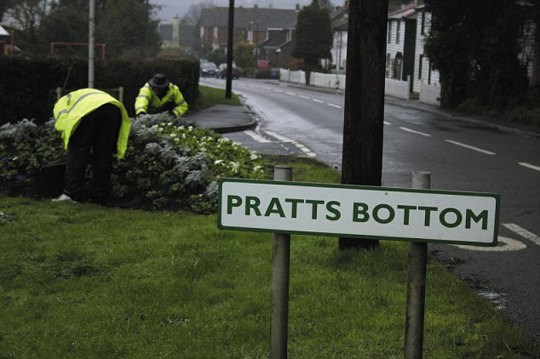

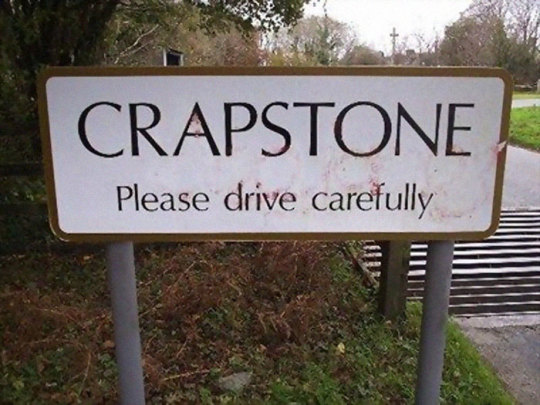


I look forward to hearing more from Lord Cameron of Pratt Bottom, Lord Brown of Great Snoring, Lady May of Crapstone, Lord Johnson of Bonks Hill, and Lady Truss of Twatt on great issues of the day in our public discourse.
Thanks for your question.
#question#ask#peerage#winston churchill#aristocracy#house of commons#knighthood#house of lords#politics#queen#monarchy#order of the garter#nobility#prime minister
56 notes
·
View notes
Text
when & where my versions of the black zodiac died
(this list is subject to potential change in the future of course)
billy michaels
date: june 21, 1959
location: philadelphia, pennsylvania (but like in the suburbs)
jimmy gambino
date: december 31, 1969 - january 1, 1970
location: new york city, ny
susan legrow
date: july 4, 1987
location: springfield, ohio
royce clayton
date: october 11, 1957
location: madison heights, michigan
dana newman
date: february 14, 1972
location: new york city, ny
isabella smith
date: march 1, 1695
location: burkittsville, maryland (yes the blair witch town)
margaret & amelia shelburne
date: september 24, 1879
location: bridgeport, connecticut
george markley
date: august 26, 1895
location: west virginia
lenore howlett
date: october 31, 1947
location: a nondescript prison somewhere in nebraska
horace mahoney
date: april 17, 1991
location: probably somewhere in like maine (i once saw someone call horace “like something out of a stephen king novel” and honestly? yeah.)
jean kriticos
date: december 25, 2009
location: agoura hills, california
12 notes
·
View notes
Text
"He was never married": The story of John H. Packard, the papermaker [Part 1]

Three brothers (John and Charles Packard, RBM II), c. 1940. Likely in Plainfield. Colorized on Sept. 28, 2022 using Ancestry.com tools.
On October 15, 1882, John Henry Packard was born in Plainfield, Massachusetts to a farmer named Cyrus Winfield Packard (1852-1924) and former teacher, and shirtwaste worker, named Dorothy "Dora" Ann Mills (1849-1895). [1] He was an only child at the time of this birth. Over the years, he would have three brothers: Joseph Winfield (1885-1910), Charles Edward (1887-1960), and Robert (1891-1956) [adopted in 1895 by the Mills family]. He would also have 3 sisters: Margaret (1884-1976), Marion Estelle (1889-1965), and Mabel Hattie (1892-1961).
By 1900, he would be living in Plainfield with his father, Cyrus, his siblings, and Clementine, the second wife of Cyrus. He would be a farm laborer. [2] By 1918, he would work at George W. Sears in Windsor, Massachusetts as a farmer. A few years later, in 1920, he would be a papermaker working at a papermill and said to be the brother-in-law of Edwin A. Jordan, head of the household. Through the 1920s, he would be living in Berkshire, Massachusetts, again working at Pioneer Mill. By 1930 he would be lodging in Dalton in the Pierce household and as inspector at the paper mill. In the later 1930s he would again be working at Pioneer Mill and likely by 1940 when he was a boarder in a household led by Mary L. Munch. He would continue to work at the same location through the 1940s. By 1950 he would still be living in Dalton and lodger in the Cassidy household, working as a sweeper at paper mill. [3]
The latter was confirmed by the act that in 1949, he was identified as living in Dalton. He would die on October 28, 1950 of cirrhosis of the liver and noted as single. [4] The same had been stated in the 1950 census which stated that he never married. There is more about John than this, however. Part of that involves where he lived. In 1918 he was seemingly still living in Plainfield, [5] perhaps near where he lived in 1900, on High Street. He would also live in these locations through the rest of his life, all in Dalton, Massachusetts, a town said to be a "transition town between the urban and rural portions of Berkshire County":

Created using Google Earth Pro. Added pins by myself on September 27, 2022. I think "Bartonville" where he was in listed as living in 1926 and 1929 is likely Barton Hill Road. [6]
His obituary noted that he lived in Dalton for 32 years (1918-1950), and employed at Crane & Company and a member of the Dalton Congregational Church. In a weird twist of fate, he lived his last four months in Heath (where his brother Charles Edward was likely living), died at the Franklin County hospital in Greenfield, had his funeral at the Smith funeral home in Shelburne Falls, and was buried in West Hill Cemetery. Heath was a town that was a 30-40 miles away from Dalton, depending on which route you took, while Greenfield was even farther, at most fifty miles away and Shelburne Falls was 34-38 miles away depending on the route taken. However, where he is buried makes some sense. As it turns out, West Hill Cemetery, was only about 15 miles away.
Where John worked is now known as the Crane Museum of Papermaking, meant to care for, collect, and exhibit history of Crane Currency in order to "create an entertaining and educational experience of Crane Currency’s unique story" and papermaking itself. Since 1879, the Crane Company has supplied "banknote paper for United States currency." His role as a papermaker is akin to someone working at Westinghouse as an engineer in Pittsburgh as it is a similar situation in that one company was the main employer of the town. He worked at the Pioneer Mill, for which there as a parade in 1924, which he was likely a part of. That mill is at the current location of the Crane Museum, as confirmed by a nomination form for the National Registry for Historic Places in 1977. While he worked at the company, it was still run by the Crane family.
His time in Dalton is still generally a mystery, while historic photographs from the town's Historical Commission do not show him, local history books like A Bicentennial History of Dalton, Massachusetts 1784-1984 by Bernard A. Drew seem a bit expensive. Papermaking is said to be a big part of the Housatonic Valley region, even turning the southern Berkshires into "the center of the country’s paper industry" by the 1840s. It was also a key part of towns near Dalton, like Lee.
A deeper dive into the censuses reveals something: those he lived with also were listed as papermakers and undoubtedly also at Crane. For example, in 1920, he was living with Edwin A. Jordan, and his wife Fannie F., with both listed as papermakers. The household next to them, headed by Charles F. Dunham was the same way. On the same page John appears on, there are many others working at the paper mill. [7] While many of these families are have a typical nuclear family with a husband, wife, and children, some are households led by women, like those led by 34-year-old Bertha Greene, 47-year-old Elizebeth Marshall, or 31-year-old Rose Orten. The vast majority of those living there, on this one page, were born in Massachusetts, while some are from England, Pennsylvania, Ireland, Canada, or New York.
By 1930, the situation was relatively the same. The household John was staying in was headed by a man who was also an inspector at the papermill. In that same household, his wife, Harriet was a janitor, while a fellow 72-year-old Irish lodger, Rhoda Peterson, was also an inspector at the same place. On that page were listed an inspector at a woolen mill (46-year-old Patrick J. Enright), a sorter at the papermill (45-year-old Mary T. Gaffney), and a papermaker at the same place (44-year-old Cora M. Sherman). By 1940, he was the only person working at the papermill in the place he where he was lodging, but there were others nearby who worked there, like 35-year-old George A. Mongue and his 33-year-old wife Maguerite, 22-year-old James Fraley, 54-year-old Katherine Callahan, 61-year-old Frank J. Yates, and 68-year-old Catherine White. The same would be the case in 1950, when the head of the household, 63-year-old Frank Cassidy, was a guard at the paper mill, while Frank's 65-year-old daughter, Margaret, was a clerk there. On the same page is a 31-year-old sorter named Catherine Mongue an 18-year-old file clerk named Clara L. Brophy who were both listed as working at the papermill as well, along with a person who seemed to assemble parts at a woolen mill, 32-year-old Charles E. LaChurch.
My original aim of this post was propose that John may be gay since he lived his whole life and never married. As Michael J. Leclerc writes, as I noted in my post last month, "common signs of LGBTQ+ people are those who never married, or who married late in life or had no children" with the caveat the "these facts alone are not proof" and that additional signs are needed. However, it is hard to say for sure, even as Massachusetts is currently one of the most LGBTQ-friendly states, and has a large population of LGBTQ people today, especially in Suffolk, Hampshire and Franklin Counties. Dalton is in Berkshire County, with one of the lowest percentages of LGBTQ people. [8] Of course, these are current numbers, and there was no accounting in surveys of who was LGBTQ in Massachusetts during the time he lived there, from 1918 to 1950, so it is hard to know how many LGBTQ people were in Dalton during that period. After all, the so-called "getaway" for LGBTQ people in Western Massachusetts is Northampton, which is 36 to 42 miles away from Dalton, depending on the route taken. Only recently has the LGBT Chamber of Commerce expanded to Western Massachusetts, an area dubbed the "land of many rainbows" for older adults in 2017, as people move out of cities and to rural areas as prices in cities continue to climb. [9]
Before coming to a firm conclusion, I'd like to look at the censuses where he appeared again. Edwin A. Jordan, head of the household who lived with in 1920, died later that year. Edwin, who was married to a woman named Fannie as I noted earlier, was said to be John's brother-in-law, with no one else in the household. Something similar happened in 1930. In the census that year, Herbert Pierce, who headed the household where he lived, died in 1935. Pierce was married to Harriet Whitney. There were no other men in the household, as everyone else were women, either related to Herbert, his wife, or were lodgers. [10] By 1940 he was living in a household headed by a widowed landlady, Mary L. Munch. There were various single men in the household. This included a 37-year-old man named James Leland Fitzgibbons, who is noted as never marrying in the 1950 census, and also confirmed by the 1930 census. [11] There was also a 52-year-old man named Albert Cleo Maynard who was then-single. Albert would marry a woman named Mary Tubbs (1880-1964) in 1947, who would die in 1959, while Mary died many years later. By 1950, John was living in a household with no men apart from the head of the household, 62-year-old Frank Cassidy, who was married to a 58-year-old woman, Lidia E., and had a 25-year-old daughter named Margaret.

From Page 13 of aforementioned nomination form for the National Registry for Historic Places in 1977. John worked at the Pioneer Mill
So, in sum, there is not enough information, at this current time, to say that John was gay. Instead, all we can say, with definite certainty, that John was unmarried his entire life and worked at a paper mill for most of that time, from 1918 to 1950, since he moved from place to place across Dalton during his time there. Otherwise, his life will remain a bit of a mystery, although not as much as brother who was killed by a train in Nebraska.
Note: This was originally posted on July 10, 2023 on the main Packed with Packards WordPress blog (it can also be found on the Wayback Machine here). My research is still ongoing, so some conclusions in this piece may change in the future.
© 2023 Burkely Hermann. All rights reserved.
#colorized#plainfield#massachusetts#packards#family history#genealogy#genealogy research#dalton#plainfield ma#paper mills#20th century
0 notes
Text
United Way starts to distribute N.S. wildfire relief
United Way Halifax has begun giving out funding to organizations as part of the wildfire recovery.
The charity says the money is being used to cover needs like food, appliance replacements, baby hygiene and cleaning supplies. Twelve organizations in the Tantallon-area as well as Shelburne and Barrington have received funding so far.
The Wildfire Recovery Appeal has raised more than $1.3 million dollars -- more than $300,000 of which came from a relief concert.
“The money that United Way raises is going to people affected by the wildfires,” said Sue LaPierre, director of social impact strategy with United Way Halifax. “People who were displaced. People who’ve lost their homes. People without insurance. People who can’t afford their deductible.”
About $15,000 went to St. Nicholas Anglican Church in Upper Tantallon.
Their volunteers are working as quickly as they can to give it to those who need it.
“Mostly in small denominations,” said Tanya Moxley, the treasurer and board member at St. Nicholas Anglican Church. “Grocery cards, Walmart, helping with kids supplies -- that kind of stuff.”
The team of volunteers is also managing larger requests.
“We’ve also had two specific requests from United Way to put together a $1,000 package for two folks that were uninsured completely and really needed a lot of support.”
United Way approved about $20,000 dollars to the St. Margaret’s Bay Toy Library, a volunteer-run group that usually helps loan toys to kids.
Their volunteers will be giving $200 gift cards to Toys R Us to kids from the hardest hit areas, some who’ve lost everything, as well as $50 gas cards for their families to get there.
“We think of toys as something silly but it means a lot to these kids and we want them to know that we care and we’re going to do our best to replace it,” said Jill Crowe, who is helping to run the operation.
The wildfires levelled Terry Hiltz’ home. The house was insured and he plans to rebuild.
As he tackles his own tasks, he and his neighbours want to see any relief money help those people who need it most.
“I’m not looking for any handout or anything. I’m not like that,” said Hiltz. “But there’s a lot of people that are way worse off than I am, and I mean, that’s where the money should go to help those people out.”
For some, credit card debt is mounting to cover things like cleaning costs. In Mona Buchanan’s case, insurance has been slow.
“More costs are mounting on,” she said.
Hiltz notes how contractors have been digging into their own pockets to help support people as they rebuild and he believes they too should be eligible for help.
“Contractors that are working for people that maybe don’t have house insurance. Or don’t have a lot of money to work with. Maybe give some money to those people because they’ve got to make a living too,” Hiltz said.
CTV News asked United Way about whether contractors would be eligible for funding and Sue LaPierre noted how United Way only gives to people through non-profits, charities or Indigenous governing bodies.
“It is possible that one of those organizations could try to coordinate efforts and contract out on individual’s behalf,” LaPierre said.
She noted United Way still has well over $1 million left from the money it’s raised thus far.
“It’s just the early days of distributing money,” she said. “We are continuing to fundraise and we don’t know what the future needs are going to be.”
LaPierre said she expects United Way to be working for months to help people as their needs evolve.
from CTV News - Atlantic https://ift.tt/4jFbfPg
0 notes
Text

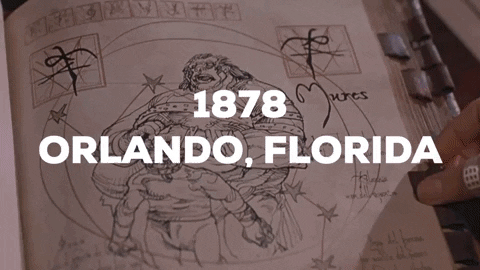
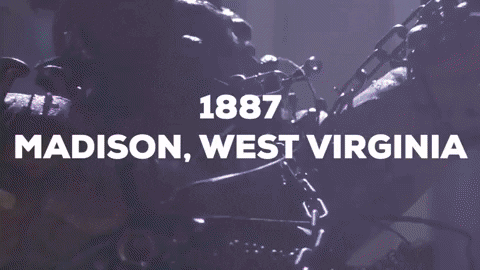
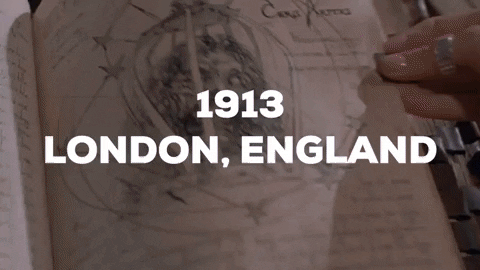

The Black Zodiac and my headcanon on their deaths (part two) Part one here
#thirteen ghosts#thir13en ghosts#13 ghosts#headcanon#the pilgrimess#isabella smith#the great child#the dire mother#harold shelburne#margaret shelburne#the hammer#george markley#the jackal#ryan kuhn#the juggernaut#horace mahoney#my headcanon#my gif#again#not american so don't @ me
117 notes
·
View notes
Text

The Great Child
One of the strangest ghosts I caught had to be Harold Shelburne, ‘The Great Child.’ His three-foot-tall mother Margaret Shelburne, was wildly overprotective of her son, smothering and spoiling him from infancy and never stopping as he grew.
Harold could barely care for himself, and as a result remained in diapers his entire life. Mocked at every turn, they sought refuge with a traveling freak show run by a man named Jimbo. But even a life in the circus was no escape, as they were continually taunted and tormented by their own twisted kind.
One night, some of the freaks kidnapped Margaret as a cruel joke. In a panic-fueled rage, Harold destroyed the entire carnival in search of his mother. When he finally found her, she had died of suffocation.
Filled with hatred, Harold grabbed an axe and had his revenge on the freaks, displaying what was left of them in the carnival for every paying customer to see. When Jimbo found out what had happened, he had Harold mutilated beyond what you or I can comprehend.
Well, maybe you.
The Dire Mother
Margaret Shelburne, ‘The Dire Mother,’ was a shy woman who could never stand up for herself, partly because she rose to only a mere three feet in height. Since childhood, she was stared at for her “pint size.” Her own mother would even sometimes dress her like a doll. Margaret didn’t care, as long as she found some perverse form of acceptance. A carnival barker named Jimbo put her on display in his freak show. Life was horrible being an attraction for people to gawk at.
One night while sweeping up a donkey pen, she was raped by the “Tall Man.” She spawned a beastly offspring of her own. Oh, she loved her dear son Harold, more than life itself, never letting him out of her sight.
The circus workers teased and tormented them relentlessly, a conflict that played itself out with bloody resolve that left nearly the entire circus free of life, including poor Margaret and Harold.
Well, as they say, there’s no business like show business.
25 notes
·
View notes
Link
Over the past 8 years, I have had the pleasure of collaborating with Mi’kmaq and African Nova Scotian communities and their allies to create awareness about and address cases of environmental racism in Nova Scotia through research; publications; student training; legislation; legal remedies; community organizing, development and capacity building; education; public engagement events; and multi-media.
These efforts have brought us closer to our goal of achieving environmental justice in Nova Scotia.
This year alone we have witnessed several victories – the closing down of the mill that had been contaminating Boat Harbour in Pictou Landing First Nation since 1967; the decision by the Shelburne Town Council to approve a new community well in the south end of Shelburne (a (predominantly African Nova Scotian community) paid for by Ellen Page, as well as the funding by Housing Nova Scotia of new wells in residents’ homes in that community; and the decision made by Justice Frank Edwards (released to the public yesterday) to overturn the Alton Gas approval, and ruling in favour of Sipekne’katik by reversing Margaret Miller’s (former Environment Minister) 2019 decision to uphold her industrial approval.
1 note
·
View note
Photo

The Great Child: Harold Shelburne was a special-needs man who never outgrew diapers and had to be spoon fed even as a fully grown adult; he often made baby sounds. After being mocked, teased and tormented relentlessly all his life, he caused a massacre at the old freak show where he and his mother, Margaret Shelburne, lived. Some of the freaks had kidnapped and killed his mother as a joke one night. The circus owner, Jimbo, had Harold mutilated beyond recognition. His ghost appears as Harold did in life, with a small patch of hair, a bib covered in vomit and cloth diapers; he still holds the ax that he used to kill his enemies. The Dire Mother: Margaret Shelburne, Harold’s mother, was a shy little lady, standing three feet tall. She never could stand up for herself. At the freak show where she lived, she was raped by the Tall Man, another circus freak, and gave birth to her illegitimate son Harold, whom she loved more than life itself. She smothered and spoiled him from infancy and never stopped as he grew; this is the main reason for Harold's mental handicap. The two were abused to the point where Harold killed almost the entire circus after Margaret died. As ghosts, they remain together, with Harold being protective. Like the Torso, she is not aggressive. #13ghosts #thediremother #thegreatchild https://www.instagram.com/p/CGl9BlHhlXG/?igshid=1f97ogyljjj3d
0 notes
Photo

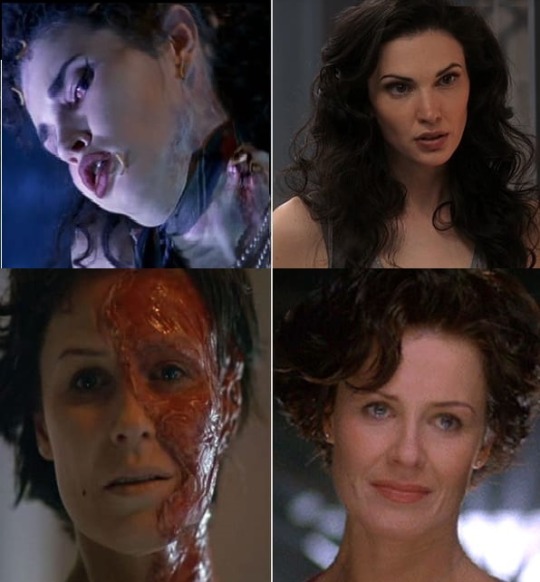

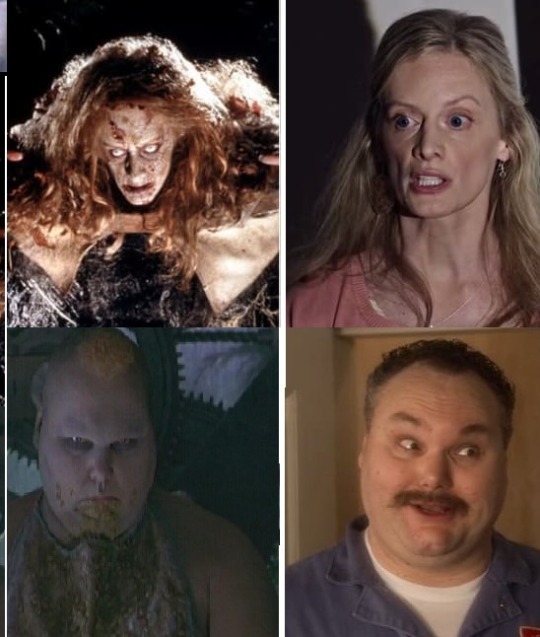
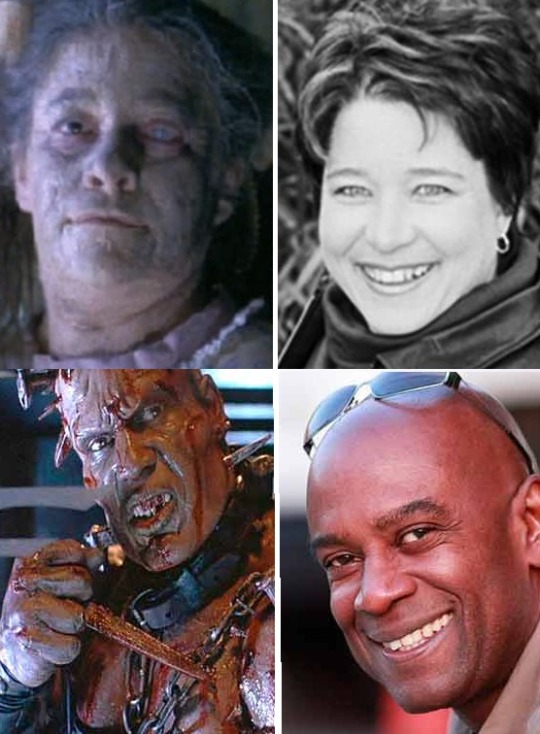

The First Born Son (Billy Michaels): Mikhael Speidel
The Torso (Jimmy Gambino): Daniel Wesley
The Bound Woman (Susan LeGrow): Laura Mennell
The Withered Lover (Jean Kriticos): Kathryn Anderson
The Torn Prince (Royce Clayton): Craig Olejnik
The Angry Princess (Dana Newman): Shawna Loyer
The Pilgrimess (Isabella Smith): Xantha Radley
The Great Child (Harold Shelburne): C. Ernst Harth
The Dire Mother (Margaret Shelburne): Laurie Soper
The Hammer (George Markley): Herbert Duncanson
The Jackal (Ryan Kuhn): Shayne Wyler
The Juggernaut (Horace "the breaker" Mahoney): John DeSantis
#thir13en ghosts#Thirteen Ghosts#13 ghosts#the first born son#THE TORSO#the bound woman#the withered lover#the torn prince#The Angry Princess#the pilgrimess#the great child#the dire mother#the hammer#the jackal#The Juggernaut#the breaker#first born son#torso#bound woman#withered lover#torn prince#angry princess#pilgrimess#great child#dire mother#hammer#jackal#juggernaut#dark castle#steve beck
52 notes
·
View notes
Text
the ghosts of the black zodiac, ranked from least to most unhinged
jean kriticos
george markley
margaret shelburne
billy michaels
jimmy gambino
amelia shelburne
royce clayton
susan legrow
dana newman
isabella smith
horace mahoney
lenore howlett
8 notes
·
View notes
Text
Tommy Adkins, Bob Mills, and the wonders of genealogy

Genealogy chart in Tommy Adkins' letter to Bob Mills
On October 17, 1979, ten months after the estate of Tom Packard had been closed, Tommy L. Adkins (of 4825 Roscommon Drive in Lansing, Michigan) wrote Bob Mills, asking for help in gathering the history of his family, using a genealogy pedigree chart. Following this form letter, he notes that "after your grandmother [Mable Hattie Packard?] past the family just sort of lost track of your grandmothers side of the family," asking for any assistance, noting he has "records, documents and such on the packard side going back as far as 1636 to Samuel Packard." He further claimed he had "verified many times over this info every step of the way" and also has the "names of a good many of the brothers & sisters, aunts and uncles etc." That may be a bit optimistic, because looking back at the claims now, a number of them are clearly faulty.
On October 21st, Bob wrote Tommy Adkins a letter of response, saying that he was thrilled because "Mabel [sic, should be Mable] Hattie Packard and the Landstroms were household words in my father and grandfather's houses." He further noted that while he never met Mable, that his family, and himself, "made several trips to Shelburne Falls and Heath, and exchanged visits with Charlie Packard, John Packard, and Margaret Packard during my youth." He also added that Tommy's interest in family history was interesting, since he added information "from a family chart I made up in 1970 which hangs on our wall at home."

This is the family chart Bob created. Current names of living individuals have been redacted
He then hilariously, before accounting the children of Cyrus Winfield Packard with Dora Mills and Clementina Cheney, calls him "the prolific old goat that started much of the recent family history with three wives producing 12 children." After that, he notes that his grandfather, RBM I ("Uncle Rob") "managed hotels in Cincinnati and elsewhere," dying in 1950, with his wife Hattie E. Mills dying in 1949, also in Cincinnati, with his grandparents and parents buried in a family plot in Spring Grove Cemetery.
He goes on in his letter by noting that Uncle Rob and Hattie "adopted my father and changed his name to Mills when he was very young," and that they had a "child of their own, Stanley Sterling Mills, born in 1901 who died in 1934 in some bizarre manner." He then outlines his own two children, those of his sister Helen, and those of his sister Carol. He ends by saying that he is "fascinated with your chart going back to Samuel Packard in 1636," adding that he believes "migrated from Hingham, England," asking "since my records are very sketchy, could you send me a copy of your history? I would appreciate it very much." That is how family histories were conducted then and are done much differently now, without a doubt.
The letter ends by him noting his role as a professor of psychology and criminal justice at the University of Cincinnati, "where I direct our graduate program in criminal justice," noting that he would be glad to give more details if Tommy would like.
Following this is the response from Tommy, which reveals much about him and his life. The letter, mostly in blue pen ink on hole-punched paper, is undated, but I would say it would have to be written in either late October 1979 or early November 1979. Of course, Tommy was, as he notes in his letter, delighted to hear from Bob, adding that they are "cousins through my wife Janet Elizabeth (Hall) Adkins, who by the way sends her regards and best wishes." He then gladly remarked that it was a pleasure to be "finally contacted [by] someone in the family who wants to know the families['] history." He then buffs out the Packards by declaring it "one of the oldest families in this country," saying members served in King Philips' War in 1675-6, adding that "I feel we all need to know where we come from so that we can better understand who we are," which is often a motto for genealogists!
He prefaces his list of family information by saying that "the only time I actually have to keep up with my correspondence is late in the evening." He then lists the generations, which can be visualized as follows, showing 10 generations: RBM III-RBM II-Cyrus W.-William H.-Barnabas III-Barnabas II-Barnabas I-John-Zaccheus-Samuel. He adds to this that "there were three Barnabas's in a row each of the last two [were] the son of the former." After that, he was apparently tired, as he says "that's about all the energy left in me" as he switches to pencil for some reason (maybe because its easier than writing in pen? He notes that Harold Packard died one year after Tom Packard which was "a great shame," and that he has "a great amount of history on other members of the family not in our direct line" which he would send if he had time.
He closes his letter by talking about himself and his wife Janet or "Jan." He notes he is an auditor for HEW, saying that he and Jan moved to Lansing, Michigan from Massachusetts in June of that year. Additionally they have three children, he notes, who are as follows: Thomas A. Adkins, Heathe Jo Adkins, and Sarah Christen Adkins. The letter ends by saying he became interested in genealogy three years before (in 1976) and has, since then, "some remarkable success, [and] also some setbacks," while also asking for the birthdays and places of birth of Bob's children, as it likely seemed like a fair trade to him, perhaps.
What happened to Tommy Adkins? I don't know, as I could only find, with a quick search a person of the same name in Georgia, but not one in Michigan. Searches for the others have been, at this time, unsuccessful, even when looking at who lives at that current address at the present time.
That's all. Until next time!
Sources used for this post
Genealogy-letter pedigree form letter and short letter on back from Tommy Adkins to Bob Mills, October 17, 1979
Typescript letter of Bob Mills to Tommy Adkins, October 21, 1979, within Family Records folder and black binder for family records.
Handwritten letter of Tommy Adkins to Bob Mills, likely late October 1979 or early November 1979, within Family Records folder and black binder for family records.
Note: This was originally posted on Apr. 29, 2019 on the main Packed with Packards WordPress blog (it can also be found on the Wayback Machine here). My research is still ongoing, so some conclusions in this piece may change in the future.
© 2019-2022 Burkely Hermann. All rights reserved.
#packards#genealogy#family history#genealogy research#ancestry#lineage#family tree#heath#shelburne falls#shelburne#massachusetts#cincinnati#hotels#spring grove cemetery#stanley sterling mills#king phillip's war
0 notes
Text
Testing the limits: N.S. labs working through water test backlog due to wildfires
Many Nova Scotians are continuing to wait for well water test results, thanks to a surge in demand following the recent wildfires.
Advised by the province to test their water after returning to evacuation zones, some residents are asking why results are taking days or weeks to return.
Provincial labs say they are working flat-out to deal with it.
Anyone with a positive bacteria test like coliform or E-Coli is generally alerted with a phone call within 48-hours, but detailed reports are taking much longer.
"Everybody's going to be busier than they are now," plumber Lonny Wright told CTV News Wednesday.
“Everybody's fairly maxed out as it is, and now, with all this, people are going to have to be patient."
Testing has significantly ramped-up at the Nova Scotia Health Provincial Lab, which does all chemical water testing in the province.
While some samples have come back positive for bacteria, officials say no obvious trends have emerged from the extra tests they've processed, and they don't log that information anyway.
“A lot of those results go back to the end user and they'll be discussing those results with Nova Scotia Environment to actually figure out if there is something wrong with their water," said Randy Veinotte, the N.S. Esoteric Lab Manager.
"It's really up to Nova Scotia Environment to help the individuals if they're having issues with their water to try and figure out what they need to do," said Veinotte.
“I think the most important thing for anyone who was either evacuated or that's considered in that fire area, is for them to know that the province is offering free water testing for them."
Private labs have also been recruited to help.
AGAT Laboratories in Dartmouth has assembled and distributed thousands of kits.
"We've sent out 3150 kits to sites around the province: Tantallon, Barrington, Yarmouth,
Shelburne," said Pam Reyno, the company's quality assurance & eastern general manager.
"A lot of kits have gone out. We've got about a thousand of those kits back at this point," she said.
Some of them are being sent to testing facilities as far away as Ontario and Alberta.
Like the provincial lab, the company says no obvious trends have emerged from the testing, but customers should generally consider no news to be good news.
"It's still a little early to be able to speak to the data itself,” said Reyno.
"But, if there are any positive micro-samples at this point, anyone within 48 hours of submitting it would have heard if they do have any positives. So, if people have submitted their bottles, and they haven't heard back, then chances are they do not have a positive result for their micro, but the chemistry results are still in the review stage, so we wouldn't be able to speak to that yet," she said.
On Wednesday, the department tweeted that testing kits will no longer be available at the Saint Margarets Centre in Tantallon, but residents could still pick them up and return them to individual labs, and the province would continue to cover the cost.
The department lists water testing labs on its website.
For more Nova Scotia news visit our dedicated provincial page.
from CTV News - Atlantic https://ift.tt/opsmD3w
0 notes
Text

Thir13een Ghosts aesthetics
» Margaret Shelburne, the Dire Mother
40 notes
·
View notes
Text
Margaret Temple obituary
Margaret Temple obituary #IpswichMA
Margaret Louise Gould Temple passed quietly at her home on Wednesday, July 22, 2020.
Margaret (Peg) was born in Greenfield, Massachusetts on June 16, 1931 to Robert M. Gould and Mildred Wheeler Gould.
Peg grew up on her family farm in Shelburne Center where her family nurtured both a love of nature and a hard work ethic.
After graduating from Arms Academy in Shelburne Falls, Peg…
View On WordPress
0 notes